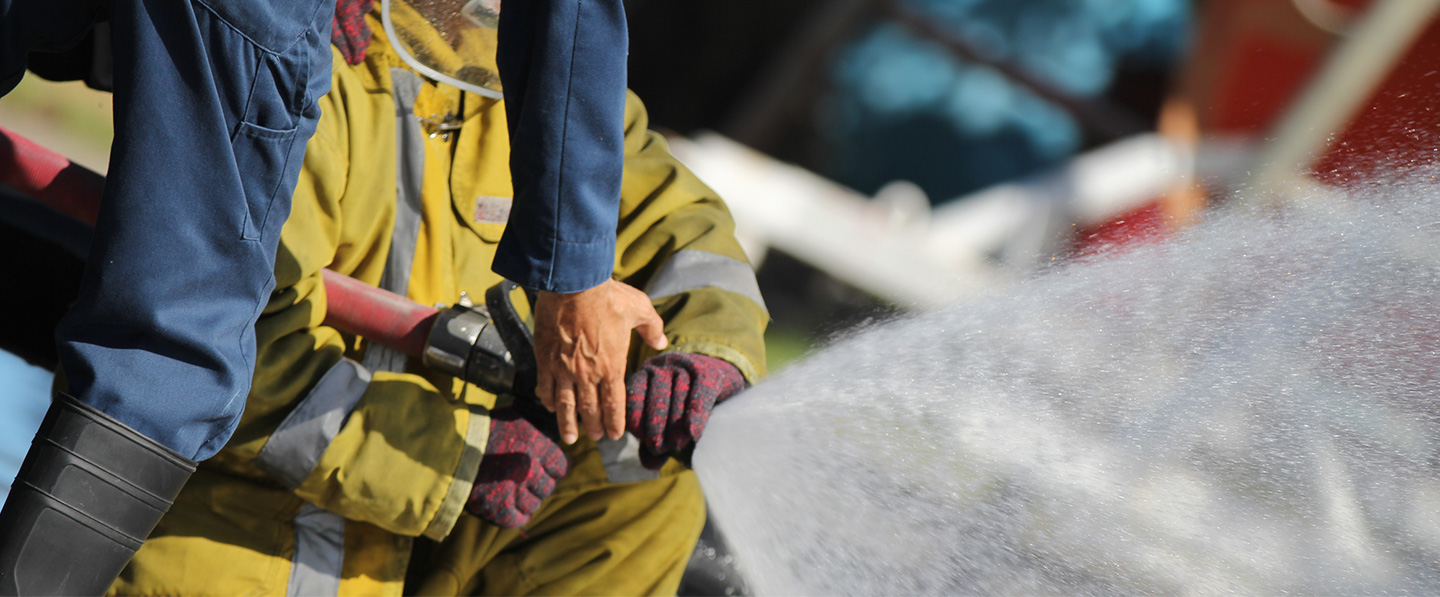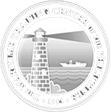
COURSES
Allied Courses
| AIMS |
This model course aims to meet the mandatory minimum requirements for the training of personnel aboard Ro-ro passenger ships, and the training of personnel on passenger ships other than Ro-Ro passenger ships, follows: 1. Ro-Ro passenger ships The training for masters, chief mates, chief engineer officers, second engineer officers, and any person assigned immediate responsibility for embarking and disembarking passengers, loading, discharging or securing cargo, or closing hull openings, and any other person having a responsibility for the safety of passengers in emergency situation required by Regulation V/2, pa 7 and 8, of the STCW Convention, and specified in Section A-V/2 pa. 4 and 5. 2. Passenger ships other than Ro-ro passenger ships The training for masters, chief mates and persons assigned immediate responsibility for embarking and disembarking passengers, including chief engineer officers, second engineer officers and any other person having responsibility for embarking and disembarking passengers and for the safety of passengers in emergency situations required by Regulation V/3 pa. 7 and 8 of the STCW Convention and specified in Section A-V/3 pa. 4 and 5 A separate model course addresses crowd management, passenger safety and safety training for personnel providing direct services to passengers in passenger spaces. |
||||||||||||
| OBJECTIVES |
1. Ro-Ro passenger ships A trainee successfully completing the training will be able to:
2. Passenger ships other than Ro-ro passenger ships A trainee successfully completing the training will able to:
|
||||||||||||
| ENTRY STANDARDS | There are no specific entry standards for the training in this Model Course. However, all personnel having specific responsibilities on board detailed in Section A-V/2 and Section A-V/3 pa. 4 and 5 must undertake this training. | ||||||||||||
| SCHEDULE |
|
||||||||||||
| AIMS |
This model course aims to meet the mandatory minimum requirements for the training of personnel aboard Ro-ro passenger ships, and the training of personnel on passenger ships other than Ro-Ro passenger ships, follows: 1. Ro-Ro passenger ships The training for masters, chief mates, chief engineer officers, second engineer officers, and any person assigned immediate responsibility for embarking and disembarking passengers, loading, discharging or securing cargo, or closing hull openings, and any other person having a responsibility for the safety of passengers in emergency situation required by Regulation V/2, pa 7 and 8, of the STCW Convention, and specified in Section A-V/2 pa. 4 and 5. 2. Passenger ships other than Ro-ro passenger ships The training for masters, chief mates and persons assigned immediate responsibility for embarking and disembarking passengers, including chief engineer officers, second engineer officers and any other person having responsibility for embarking and disembarking passengers and for the safety of passengers in emergency situations required by Regulation V/3 pa. 7 and 8 of the STCW Convention and specified in Section A-V/3 pa. 4 and 5 A separate model course addresses crowd management, passenger safety and safety training for personnel providing direct services to passengers in passenger spaces. |
||||||||||||
| OBJECTIVES |
1. Ro-ro passenger ships A trainee successfully completing the training will be able to:
2. Passenger ships other than Ro-Ro passenger ships A trainee successfully completing the training will able to:
|
||||||||||||
| ENTRY STANDARDS |
There are no specific entry standards for the training in this Model Course. However, all personnel having specific responsibilities on board detailed in Section A-V/2 and Section A-V/3 pa. 4 and 5 must undertake this training. |
||||||||||||
| SCHEDULE |
|
||||||||||||
| AIM | This training program aims to meet the mandatory requirements for Masters, officers and rating and other personnel aboard Ro-Ro/Passenger/Cargo Passenger Ships engaged on domestic voyages pursuant to DOTC Department Order No.2001-49. | ||||||||||||
| OBJECTIVES |
Upon completion of the training course, the trainee shall be able to: Assist passengers during emergency situation in the correct usage of life-saving device/equipment;
|
||||||||||||
| ENTRY STANDARDS | This training program is applicable to all officers, rating, and other personnel designated on muster list to assist passengers in emergency situation onboard passenger ships engaged in domestic voyage. | ||||||||||||
| SCHEDULE |
|
||||||||||||
| SCOPE |
This model course is intended to provide the knowledge required for seafarers with designated security duties with security awareness training in connection with a Ship Security Plan (SSP) to perform their duties in accordance with the requirements of Chapter XI-2 of SOLAS 74 as amended, the ISPS Code, and section A-VI/6 of the STCW Code, as amended. |
||||||||||||
| OBJECTIVES |
Those who will successfully complete this course should be able to demonstrate sufficient knowledge to undertake the duties assigned under the SSP. This knowledge shall include, but are not limited to:
|
||||||||||||
| ENTRY STANDARDS |
It is assumed that those attending this course will be serving seafarers or other shipboard personnel and are likely to have designated security duties with security awareness training in connection with the Ship Security Plan. |
||||||||||||
| SCHEDULE |
|
||||||||||||
| SCOPE |
This course aims to provide knowledge to those who may be designated to perform the duties and responsibilities of a Ship Security Officer (SSO), as defined in section A/2.1.6. (and section A/12) of the ISPS Code, and in particular the duties and responsibilities with respect to the security of a ship, for implementing and maintaining a ship security plan and for liaising with the Company Security Officer (CSO) and Port Facility Security Officers (PFSOs) |
||||||||||||
| OBJECTIVES |
Those who will successfully complete this course should be able to undertake/assume the duties and responsibilities as ship security officer, as defined in section A/12.2 of the ISPS Code, which include, but are not limited to:
|
||||||||||||
| ENTRY STANDARDS |
It is assumed that those attending this course will be serving seafarers (or other shipboard personnel) and that they are likely to be designated as Ship Security Officer. However, no specific entry requirements are envisaged. |
||||||||||||
| SCHEDULE |
|
||||||||||||
| SCOPE |
This course covers Chapter IX of the International Convention for the Safety of Life at Sea [SOLAS], 1994, as amended and the International Safety Management Code as adopted. |
||||||||||||||||
| OBJECTIVES | To demonstrate knowledge and understanding of the ISM Code Provide trainees knowledge and understanding of the development and functional requirements of Chapter IX of the International Convention for the Safety of Life at Sea [SOLAS], 1994, as amended and the International Safety Management Code framework of guidelines in matters of safety and pollution prevention. |
||||||||||||||||
| ENTRY STANDARDS | All shipboard personnel of all levels. | ||||||||||||||||
| SCHEDULE |
|
||||||||||||||||
| SCOPE |
This course encompasses basic knowledge with regard to the use and abuse of drugs and alcohol in the maritime industry. |
||||||||||||
| OBJECTIVES | A trainee successfully completing this course will be able to acquire knowledge that will enable him to identify and prevent harmful and/or hazardous situation and take necessary precautions for the diminution of health and safety problems related to the abuse of drug and alcohol in the maritime sector.
Those successfully completing this course should also be able to identify the prevention role as part of the responsibilities and on-going duties of the owners, management and other entities involved in developing programs to help seafarers with drug and alcohol problems. Lastly, trainees successfully completing this course will be able to build better relationship with others, understand the significance of moderate use and tolerable limits of alcohol and considerations of legally use of drugs on board and identify their respective responsibilities with reference to shipboard function standards. |
||||||||||||
| ENTRY STANDARDS | The course is for all imminent seafarers, marine officers and ratings that they should be aware of the dangers of drug and alcohol abuse and erudite in the preventive measures and would be taken before they are to be employed on board. | ||||||||||||
| SCHEDULE |
|
||||||||||||
| SCOPE |
This course covers the requirements for the Messman on board ship. Every trainee will undergo a progressive program on a strict lecture and demonstration basis. Trainees are also subject to a practicum which will be held at the last part of the training. This course covers general orientation on the roles of the steward department, menu knowledge, table service, bartending, housekeeping service, hygiene and sanitation. |
||||||||||||
| OBJECTIVES | On completion of this course, students will acquire knowledge and understanding and to some extent, skills in the performance of the duties of a messman on board ship. Student should be able to:
|
||||||||||||
| ENTRY STANDARDS |
There are no specific entry for the training in this course. The training is for prospective seafarers, who will serve as Messman steward on board ship. |
||||||||||||
| SCHEDULE |
|
||||||||||||
| SCOPE |
This course is especially designed for the Filipino Seafarer to prepare him in meeting the challenges of a cross-cultural environment onboard ships. This course covers topics on effective human relations, human interactions with shipmates coming from different countries with various cultural background; and leadership development in a shipboard setting. |
||||||||||||
| OBJECTIVES |
Trainees who successfully complete this course acquire a better understanding and knowledge of Human Relations, including leadership in a shipboard setting in accordance to STCW’95 Resolution 5. |
||||||||||||
| ENTRY STANDARDS |
Any seafarer belonging to the management, operational or support level and hotel crew for passenger/cruise ships. |
||||||||||||
| SCHEDULE |
|
||||||||||||
| AIMS | The IMO model course of Maritime English provides a guide for instructions responsible for teaching English.
The content of the course more than fulfills the English language requirements of Part A of the STCW Code 1995. Provided that the material is properly taught according to the principles of communicative methodology, which are explained in the Instructor’s Manual in Part D of this model course, trainees who complete all relevant aspects of the syllabus successfully will possess the level of competence in English set out by the STCW Code 1995. |
||||||||||||
| OBJECTIVES | The objectives of the IMO model course of Maritime English are to:
|
||||||||||||
| ENTRY STANDARDS | At least a graduate of Bachelor of Science in Marine Transportation and Bachelor of Science in Marine Engineering for Officers, or at least a high school graduate and well-versed in English language. | ||||||||||||
| SCHEDULE |
|
||||||||||||
| SCOPE | |||||||||||||
| OBJECTIVES |
|
||||||||||||
| ENTRY STANDARDS | |||||||||||||
| SCHEDULE |
|
||||||||||||




